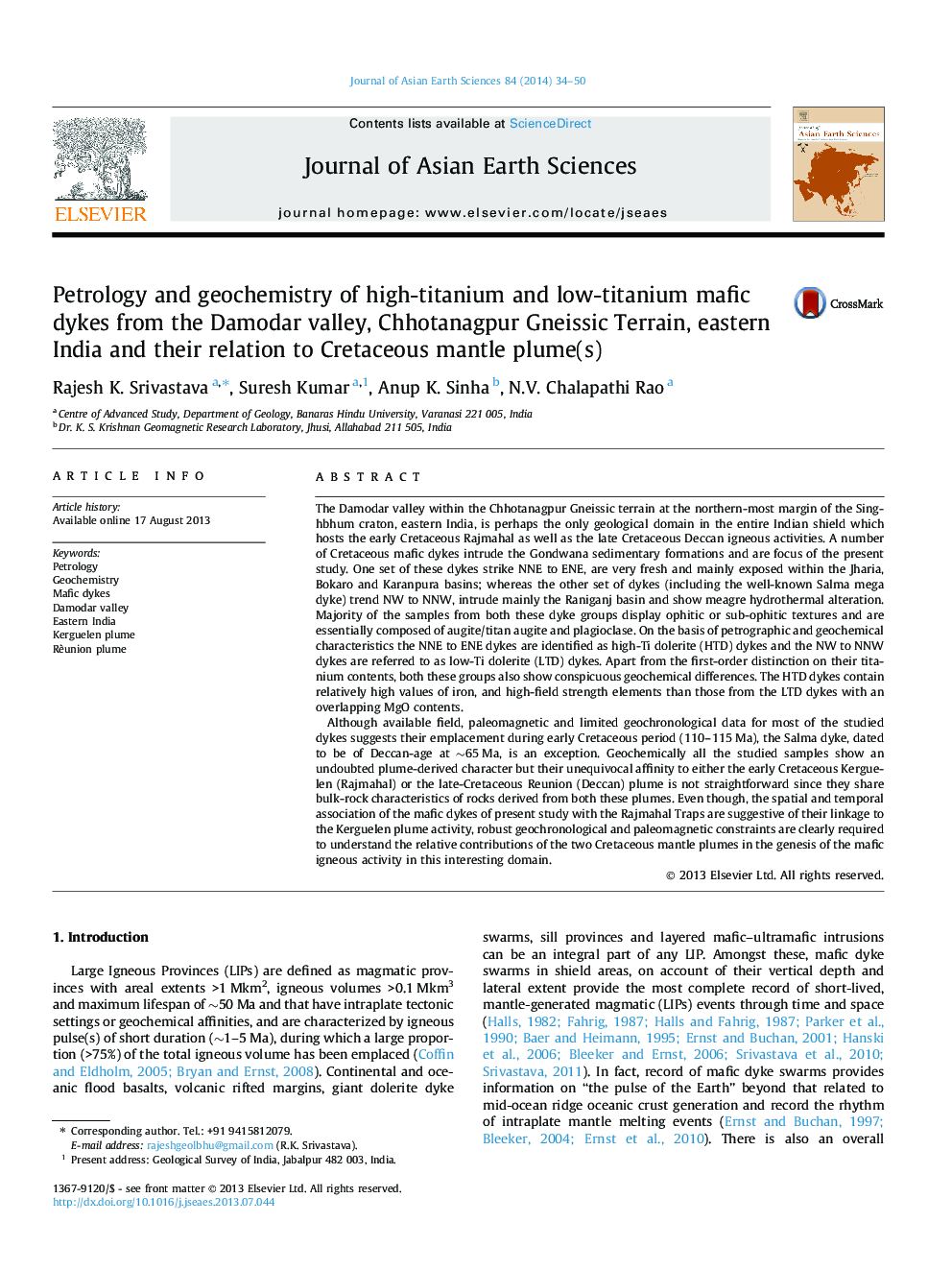| کد مقاله | کد نشریه | سال انتشار | مقاله انگلیسی | نسخه تمام متن |
|---|---|---|---|---|
| 4730745 | 1640384 | 2014 | 17 صفحه PDF | دانلود رایگان |
• New petrological data on Cretaceous mafic dykes, Damodar valley, eastern India.
• The only region in Indian shield with early and late Cretaceous magmatic events.
• Geochemically they are classified as high- and low-titanium types.
• Both types have different petrogenetic history with mantle plume connection.
• They are emplaced either ∼110–115 Ma or ∼65 Ma.
The Damodar valley within the Chhotanagpur Gneissic terrain at the northern-most margin of the Singhbhum craton, eastern India, is perhaps the only geological domain in the entire Indian shield which hosts the early Cretaceous Rajmahal as well as the late Cretaceous Deccan igneous activities. A number of Cretaceous mafic dykes intrude the Gondwana sedimentary formations and are focus of the present study. One set of these dykes strike NNE to ENE, are very fresh and mainly exposed within the Jharia, Bokaro and Karanpura basins; whereas the other set of dykes (including the well-known Salma mega dyke) trend NW to NNW, intrude mainly the Raniganj basin and show meagre hydrothermal alteration. Majority of the samples from both these dyke groups display ophitic or sub-ophitic textures and are essentially composed of augite/titan augite and plagioclase. On the basis of petrographic and geochemical characteristics the NNE to ENE dykes are identified as high-Ti dolerite (HTD) dykes and the NW to NNW dykes are referred to as low-Ti dolerite (LTD) dykes. Apart from the first-order distinction on their titanium contents, both these groups also show conspicuous geochemical differences. The HTD dykes contain relatively high values of iron, and high-field strength elements than those from the LTD dykes with an overlapping MgO contents.Although available field, paleomagnetic and limited geochronological data for most of the studied dykes suggests their emplacement during early Cretaceous period (110–115 Ma), the Salma dyke, dated to be of Deccan-age at ∼65 Ma, is an exception. Geochemically all the studied samples show an undoubted plume-derived character but their unequivocal affinity to either the early Cretaceous Kerguelen (Rajmahal) or the late-Cretaceous Reunion (Deccan) plume is not straightforward since they share bulk-rock characteristics of rocks derived from both these plumes. Even though, the spatial and temporal association of the mafic dykes of present study with the Rajmahal Traps are suggestive of their linkage to the Kerguelen plume activity, robust geochronological and paleomagnetic constraints are clearly required to understand the relative contributions of the two Cretaceous mantle plumes in the genesis of the mafic igneous activity in this interesting domain.
Journal: Journal of Asian Earth Sciences - Volume 84, 15 April 2014, Pages 34–50
